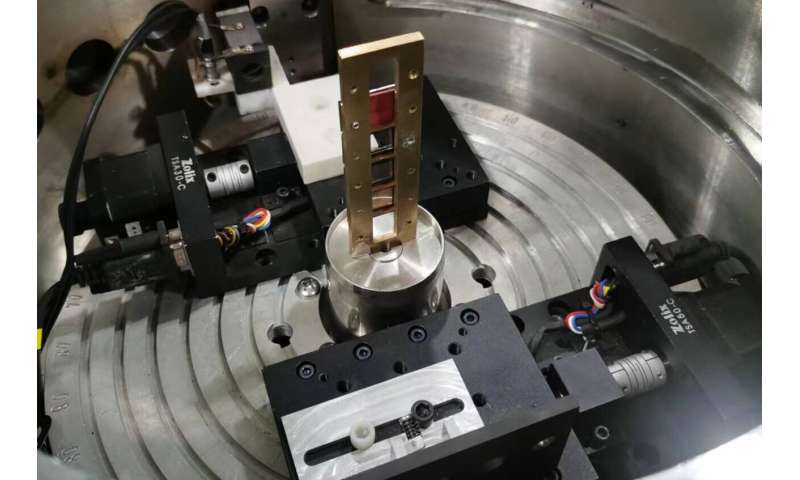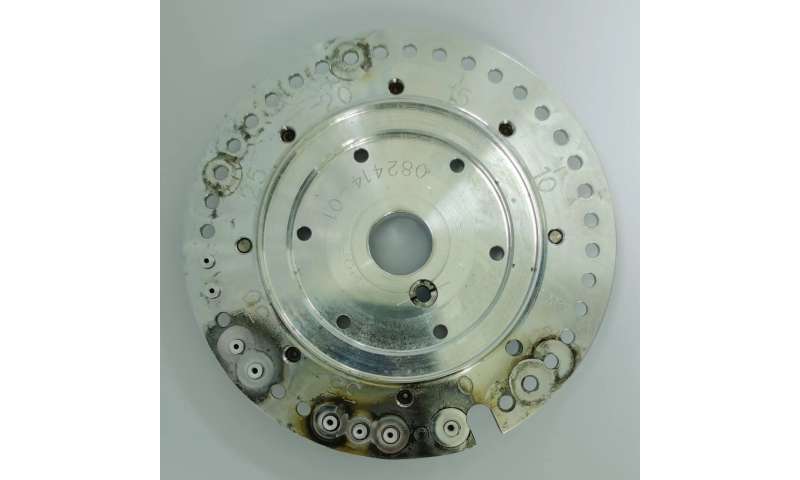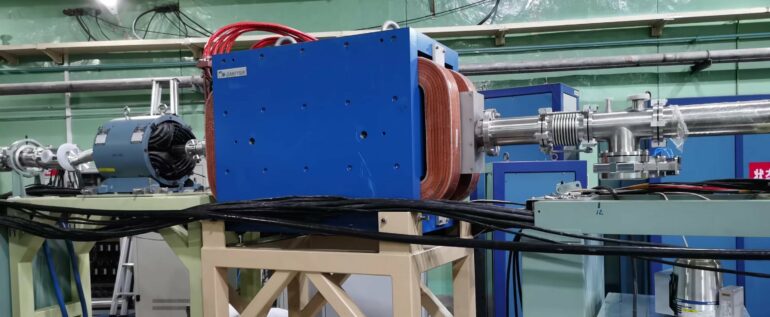Researchers at the China Institute of Atomic Energy (CIAE) have significantly enhanced the method of detecting iron-60 (60Fe), a rare isotope found in lunar samples, using the HI-13 tandem accelerator. This achievement paves the way for detecting 60Fe in lunar samples for a deeper understanding of cosmic events like supernovae that occurred millions of years ago.
The findings are published in the journal Nuclear Science and Techniques.
The study, led by Bing Guo, utilized a refined accelerator mass spectrometry (AMS) technique to detect 60Fe, a rare isotope produced by supernovae and found in samples returned from the moon. The enhanced AMS system, equipped with a Wien filter, successfully identified 60Fe in simulation samples with sensitivity levels previously unachievable. This finding demonstrates a detection sensitivity better than 4.3 × 10−14 and potentially reaching 2.5 × 10−15 in optimal conditions.
For decades, the challenge of detecting low-abundance isotopes like 60Fe in lunar samples has stumped scientists due to the isotope’s scarcity and the presence of interfering elements. The traditional methods fell short in sensitivity. The latest modifications at the CIAE’s HI-13 tandem accelerator facility represent a significant step forward.
Guo said, “Our team agreed that the only way to track historical supernovae events accurately was by pushing the boundaries of what our equipment could do. The installation of the Wien filter could be a game-changer for us.”

The target chamber was equipped with a collimator, a target holder, and a Faraday cup. Si3N4 foil degraders were installed on the target holder. The Q3D magnetic spectrograph is able to rotate around the target chamber. © China Institute of Atomic Energy

The cathode holder disk is part of the NEC multi-cathode source of negative ions by cesium sputtering. Cathodes of 60Fe samples and blank samples were installed on the holder disk. © China Institute of Atomic Energy
The findings of this research extend beyond the academic realm, offering insights into the processes that shape our universe. The ability to measure minute quantities of 60Fe on the moon provides a direct link to studying past supernovae events that have occurred nearby. These discoveries have implications for astrophysics, offering a new lens through which to view the history and evolution of stars.
Looking ahead, the CIAE research team plans to refine their techniques further to improve the sensitivity of their measurements. Enhancements in ion source and beam transmission efficiencies are expected to push detection capabilities even further.
“Our next goal is to optimize our entire AMS system to reach even lower detection limits. Every bit of increased sensitivity opens up a universe of possibilities,” explained Guo.
The successful development of this enhanced AMS method contributes to both lunar research and the study of interstellar phenomena. As researchers continue to refine this technology, our understanding of the universe’s history grows deeper, proving once again that our journey through the cosmos is far from over.
More information:
Yang Zhang et al, Stepped-up development of accelerator mass spectrometry method for the detection of 60Fe with the HI-13 tandem accelerator, Nuclear Science and Techniques (2024). DOI: 10.1007/s41365-024-01453-x
Provided by
Nuclear Science and Techniques
Citation:
New approach enhances accelerator’s capability to uncover clues from supernovae in lunar dust (2024, May 28)



